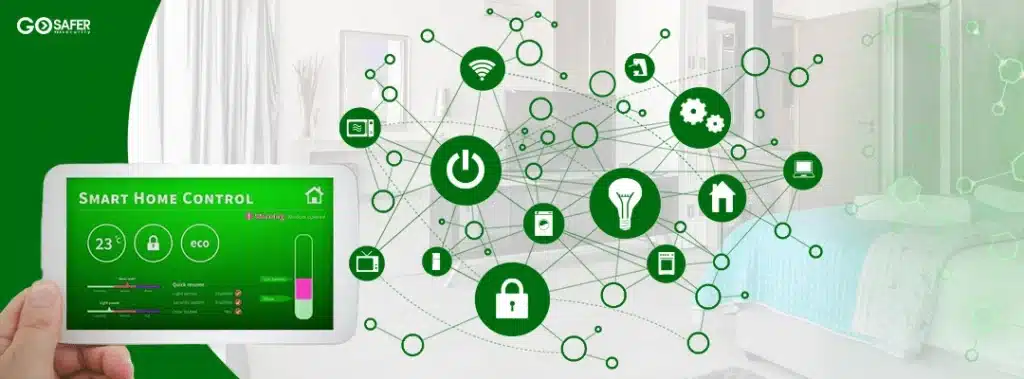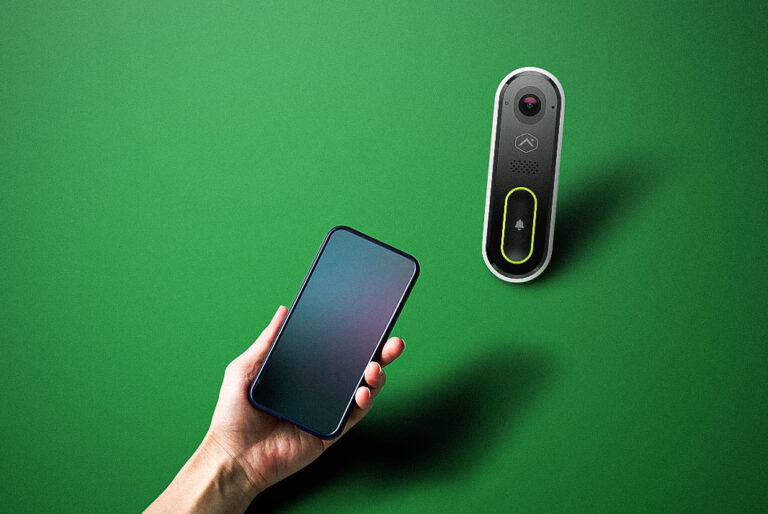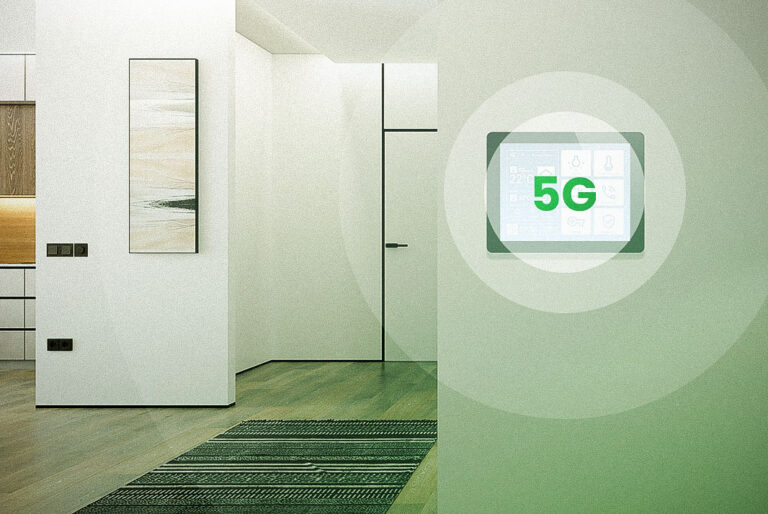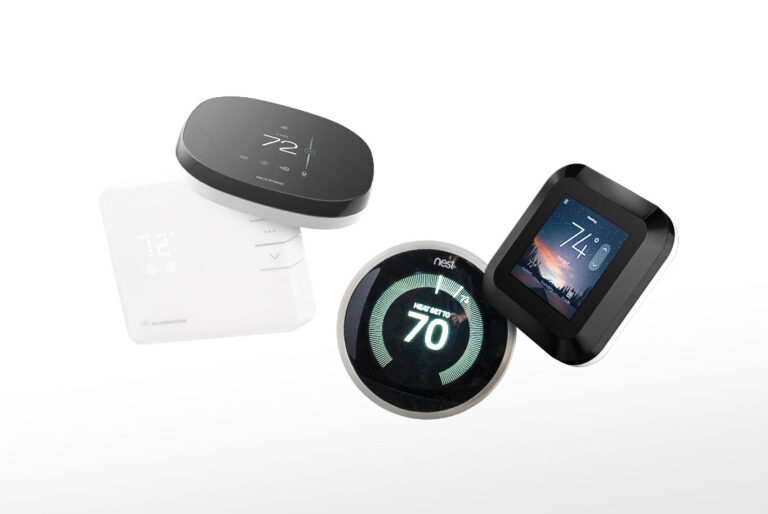Are you looking for a way to make your home more automated, comfortable, and secure? With the advancements of modern technology, it’s now easier than ever to achieve the peace of mind that comes with home automation. In this home automation guide, we’ll discuss the basics of home automation, the best smart home devices to get you started, and how to set up your own home automation system.
Table of Contents
ToggleWhat is Home Automation?
Home automation is the use of technology to control and automate the functions of a home or any other building. It includes a variety of smart devices such as lights, door locks, thermostats, security cameras, and more. These devices are connected to a central hub, typically through Wi-Fi, and can be controlled remotely using a smartphone, tablet, or computer. Home automation also enables you to schedule tasks and set up automation rules for your devices to follow. For example, you could set your lights to turn on and off at specific times or have your security cameras turn on when motion is detected.
Home automation has become increasingly popular over the past few years due to its convenience, cost-effectiveness, and home security benefits. According to a recent survey, more than three-fourths of Americans are interested in using home automation technology in their homes.
Benefits of Home Automation
Home automation brings a variety of benefits to homeowners. For starters, it makes your home more comfortable and convenient. You can control your lights, thermostat, and other devices with just the touch of a button or your voice. You can also use automation to save energy by scheduling your devices to turn on and off at specific times.
Home automation also provides an extra layer of security to your home. You can set up motion detectors, cameras, and other security features to keep your home safe and secure. With some home automation systems, you can even monitor your home and get alerts when something is amiss.
Finally, home automation is cost-effective. With some systems, you can save money on your energy bills by scheduling your devices to turn off when not in use. And with the latest advancements in technology, home automation is more accessible and affordable than ever.
Home Automation Statistics
The demand for home automation technology is growing rapidly. According to a recent report, the global home automation market is expected to grow to $74.5 billion by 2025. This growth is driven by the increasing demand for home security and convenience.
In addition, the report found that the Asia-Pacific region is expected to be the fastest-growing market for home automation over the next few years due to the increased adoption of smart home devices in countries like Japan, South Korea, and China.
Home Automation Security
When it comes to home automation, security is a top priority. Fortunately, most home automation systems are secure and encrypted. This means that your data is protected from hackers and other malicious actors.
However, there are a few steps you can take to ensure your home automation system is secure. First, make sure you’re using strong passwords for all of your devices and accounts. Second, you should also install a firewall and antivirus software to protect your system from cyber threats. Finally, only purchase home automation devices from reputable smart home device manufacturers and vendors.
Home Automation Starter Kit
If you’re new to home automation, a starter kit is a great way to get started. These kits typically include the necessary hardware and software needed to set up a home automation system.
When choosing a starter kit, make sure to look for one that includes all the devices you need. Common components include a hub, lights, sensors, cameras, locks, and thermostats. You should also make sure your kit is compatible with other devices and services you may want to use in the future.
Smart Home Devices
Smart home devices are the backbone of any home automation system. These devices are connected to the central hub and can be programmed to do a variety of tasks. Here are some of the most popular smart home devices:
-
- Lights: Smart light is a smart device that can turn on and off automatically or be remotely controlled. You can also set up rules such as turning your lights on when motion is detected or dimming them when watching a movie.
- Door Locks: Smart locks allow you to lock and unlock your doors remotely. You can also set up alerts to notify you when someone enters or leaves your home.
- Thermostats: Smart thermostats allow you to program your home’s temperature so it is comfortable when you arrive home. You can also set up rules to save energy when you’re away.
- Security Cameras: Smart security cameras can be set up to detect motion and send you alerts when something is amiss.
- Smart Speakers: Smart speakers allow you to control your devices with your voice. You can also use them to listen to music and make phone calls.
- Smart Plugs: An smart plug enables you to remotely turn on and off your devices. You can also set up rules such as turning off your coffee maker when you leave the house.
- Smart Home Gadgets: Smart home gadgets such as doorbells, smoke detectors, and air purifiers can provide an extra layer of security and convenience to your home.
- Smart Displays: Smart displays such as Google Nest Hub allow you to control your devices and get updates on the weather, news, and more.
- Smart Home Devices Manufacturers: When shopping for smart home devices, make sure to purchase from reputable manufacturers such as Nest, Ring, and Philips Hue.
Setting Up Your Smart Home
Once you have all the necessary hardware and software, it’s time to set up your smart home. The first step is to install the central hub. This is typically done by plugging it into your router and then downloading the corresponding app. After the hub is installed, you can start connecting your devices. Most devices can be connected wirelessly through Wi-Fi or Bluetooth.
Once all your devices are connected, you can start programming them. Most home automation systems allow you to set up rules and schedules for your devices to follow. For example, you can set up your lights to turn on and off at specific times or have your security cameras turn on when motion is detected.
Home Automation Apps
In addition to the hardware and software that comes with your home automation system, you can also download apps to control your devices. These apps allow you to control your devices from anywhere in the world as long as you have an internet connection.
The app also allows you to set up rules and schedules for your devices to follow. You can also use the app to monitor your home and get alerts when something is amiss.
Home Automation Services
In addition to the hardware, software, and apps available for home automation, you can also take advantage of home automation services. These services provide additional features such as remote control, voice assistants, remote sensors, and more.
For example, with Go Safer Security you can get access to a 24/7 monitoring service as well as motion detectors, cameras, and other security features. The service also includes a mobile app so you can control your devices from anywhere in the world.
Conclusion
Home automation is a great way to make your home more comfortable, convenient, and secure. With the right hardware and software, you can set up a home automation system that can be controlled remotely using a smartphone, tablet, or computer.
When shopping for smart home devices, make sure to purchase from reputable manufacturers and vendors. And if you’re looking for extra security and convenience, consider signing up for a home automation service such as Go Safer Security. With the right home automation system, you can rest assured knowing your home is safe and secure. Go Safer Security is your premier provider of security and home automation services in Maryland. Contact us for a free quote today!
Home Automation FAQs
What is the difference between a smart home and home automation?
When it comes to the differences between a smart home and home automation, there are a few key elements that differentiate the two.
A smart home technology is an interconnected system of devices and appliances that can be controlled remotely from an app or from a voice command through a digital assistant like Google Assistant. This includes things like smart lighting, smart plugs, and other connected devices. These devices are the building blocks of a smart home, allowing you to control the temperature, lighting, security system, and more.
Home automation, on the other hand, is more focused on automating specific tasks in your home. This could mean something as simple as having your lights automatically turn on when you enter a room, or something more complex like having your AC unit adjust its temperature based on the weather outside. Home automation also allows you to automate tasks like watering your plants or locking your doors at night.
Both smart homes and home automation provide convenience and allow you to save energy. However, a smart home takes it one step further by integrating all of these devices together so that they can be controlled with one app or voice command.
In the end, it really comes down to what type of system you want to create in your home. If you want to have full control over all of your devices, then a smart home is the way to go. However, if you are just looking for some basic automation of certain tasks, then home automation might be the perfect option for you.
How to control everything In your smart home automation system?
One of the most convenient aspects of having a smart home automation system is that you can control everything with just one touch! With the right combination of smart devices, smart lighting, and smart plugs, you can easily control all of your home’s electronic devices.
For starters, you can use voice commands to control your smart home system. For example, if you have Google Assistant enabled, you can use voice commands to turn on lights, switch on appliances, and control all sorts of home functions. Just say the command and it will do what you asked it to do.
You can also control everything in your smart home system through a smartphone or tablet app. With the app, you can easily adjust settings such as temperature and lighting, turn on music or TV shows, or even view who is at your front door. Many apps also come with pre-set commands for certain activities such as “goodnight” or “good morning” which will automatically adjust all settings to your desired conditions.
Finally, if you want to be in complete control of your smart home system, you can purchase a dedicated remote control. This remote will allow you to access all of your smart devices and control them with one single controller. This way, you won’t have to fumble around with multiple remotes or apps to get everything set up the way you want it.
So there you have it – with the right combination of smart devices, voice commands, and a dedicated remote control, you can easily control everything in your home automation system. Have fun exploring the possibilities!
What types of devices are available for home automation?
When it comes to home automation, there are many different types of devices available to make your home smarter and more connected.
The most popular type of device for home automation is the smart speaker. These speakers, like the Google Home app and Amazon Echo, are connected to the internet and allow you to control your home with your voice. They are also able to respond to queries and play music, as well as control other home automation devices.
Remote sensors are another type of device used in home automation. These sensors can be placed around your home to detect motion, temperature, humidity, and more. They can then be used to trigger automatic events, like turning on a light when motion is detected or adjusting the thermostat based on the temperature.
A smart thermostat is another type of device used in home automation. These thermostats allow you to control the temperature in your home remotely and set up automated schedules to save energy.
Another important device for home automation is the smart home hub. This device connects all of your other home automation devices and allows them to communicate with each other. It also allows you to control all of your devices from one central location.
You might also consider a smart display for your home automation setup. These displays, such as the Google Nest Hub, allow you to see information from connected devices, like weather forecasts and updates from connected cameras. They also allow you to control your other devices with voice commands.
Finally, voice control is an important part of any home automation system. By using voice commands with a connected device like a smart speaker or display, you can control all of your connected devices without having to use a remote or smartphone.
Overall, there are many different types of devices available for home automation. From smart speakers and remote sensors to smart displays and voice control, there is something for everyone when it comes to making your home smarter and more connected.
What are the security concerns when using a home automation system?
When it comes to home automation systems, there are certainly some important security concerns to consider. Home security is a priority for any homeowner, so it’s important to understand the risks associated with using a home automation system.
The primary concern when it comes to home automation systems is the security of the devices themselves. Most smart home systems are manufactured by third-party companies, so you need to make sure that they are reputable and that their devices are secure. You should also check to see if the device has had any security flaws identified or if there have been any reports of data breaches. It’s also important to make sure that your home network is secure and that your devices are updated with the latest security patches.
Another concern when it comes to home automation systems is privacy. Many of these devices contain personal data, so you should be aware of how this data is being used and stored. Make sure that you have read the privacy policies of the device manufacturers and that you understand how they use and store your data. Additionally, you should be aware of what data is being shared with third-party companies and how it is being used.
Finally, it’s important to be aware of who has access to your home automation system. You should make sure that only authorized users have access to your system and that all passwords are secure. Additionally, you should be aware of any remote access features that may be included in your system and make sure that they are properly secured.
Overall, using a home automation system can be a great way to make your life easier, but you should always be aware of the security concerns associated with it. Be sure to do your research and understand the risks before investing in a home automation system.
How do I choose the best home automation system for my specific needs?
Choosing the best home automation system for your specific needs can be a daunting task. With so many smart home devices, setups, security features, apps, and gear available, it can be hard to know where to start. But don’t worry, with a few simple steps, you’ll be able to find the perfect home automation system for your needs.
First and foremost, consider what you want your home automation system to do. Are you looking for basic home automation features to control lights and climate control? Or are you looking for more advanced features such as surveillance cameras, voice control, and connected appliances? Once you know what you want your home automation system to do, you can start researching the different systems available.
Next, consider what type of technology you want your system to use. Many home automation systems use Wi-Fi or Bluetooth technology to connect various devices. Others may use a more specialized technology that requires additional hardware. Make sure to research the technologies used by the various systems so you can pick the one that best meets your needs.
Finally, think about what type of smartphone app or other user interfaces you will need in order to control your system. Many home automation systems come with their own apps or user interfaces, but if you want to be able to control your system from anywhere, then you may want to look into a more comprehensive third-party app or service.
Once you have taken all of these factors into consideration, you should be able to narrow down your choices and find the perfect home automation system for your specific needs. Good luck!





